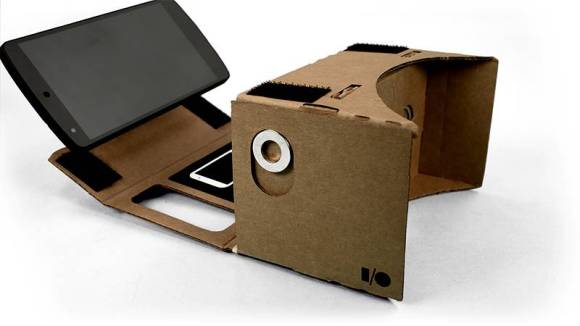
In June 2014, Google revealed a low-cost Smartphone Adapter and VR SDK at their annual software developer conference in San Francisco, California. During the event, Google handed out 6,000 cardboard kits and released a tutorial online, which prompted homemade versions to surface on the web within three hours. This then sparked an iPad case manufacturer to fashion together their own cardboard VR kit that could be bought for $25. After a week, Google gained over 50,000 downloads of their cardboard Android app.
Although the popularity of this VR viewer skyrocketed extremely fast, the idea for a cheap VR solution is nothing new. Developers have been experimenting with these types of objects for years. In fact, a group of Cupertino high school sophomores debuted a similar device called ‘Face Box’ at an entertainment and technology conference at Stanford University on June 17, more than a week before Google’s I/O presentation. A few months earlier, researchers at the Mixed Reality Research Lab (MxR) at USC launched an open source DIY VR website that showed how to create virtual reality headsets with a 3D printer. The smartphone enabled head-mounted display had schematics for both Android and iPhone. The MxR lab was where [Palmer Luckey] worked at as an engineer before founding Oculus (the company that Facebook eventually acquired for approximately $2 billion). So when [Palmer] saw that Google released their cardboard kit, he vocalized his opinion by calling it a clone of his colleagues’ research on Reddit.










